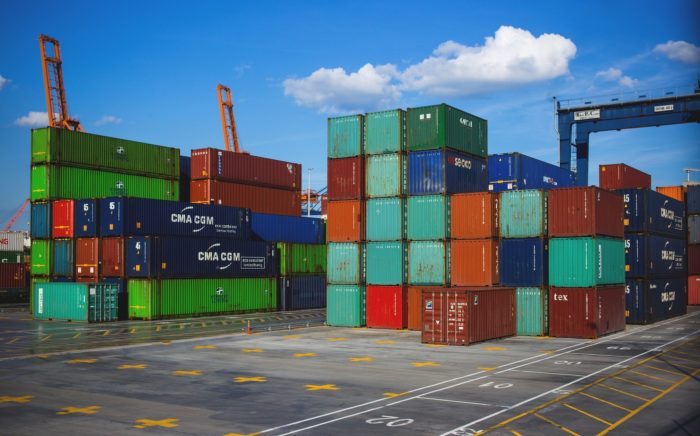Table of Contents
If you want to become an Amazon seller, it is normal to think about how often you will receive your payments.
There is no doubt that Amazon payments are a source of confusion for not just new sellers but even for the ones who’ve been on the platform for a while.
For your ease, we have compiled everything you need to know about Amazon payments in this detailed guide.
Quick Summary
In this post, we will discuss:
- How Amazon payments work
- What is meant by an “unavailable balance”
- How to deal with an unavailable balance to maximize your cash flow
So without further ado, let’s get started.
How do Amazon Payments Work with Your Seller Account?
On paper, sellers on Amazon are paid every two weeks.
Every payment you receive accounts for 14 days of orders, which were successfully delivered to customers seven days ago.
It’s important to note that the actual dates on which you receive money in your bank account can vary depending on a number of factors such as:
- The day you opened your seller account
- Unavailable balance
- Delays in fund transfers
And much more.
We realize that this might still be confusing.
Amazon’s payment scheme is definitely vague, which is why many veteran sellers still have trouble figuring out when they’re going to get paid.
Let’s try to clear it out further with an example:
Let’s assume that your payout dates are the 15th and the 29th of every month. It’s important to note that these dates represent the date on which Amazon initiates the payment to your business bank account.
These are not necessarily the dates on which you’ll receive the funds in your account.
The payment you receive on the 29th accounts for sales that you made and delivered between the 9th and the 22nd of that month.
The 7-day period between the 22nd and 29th that is not accounted for is to account for cases in which any of your customers may want to return an item they bought from you.
Amazon will initiate the transferring of funds to you on the 29th. There’s a chance you may receive it on the same day but you must also keep in mind that some ACH transfers occur on a delay.
Due to this, you may not receive your payment until 3 -5 additional days after your set payout date for the month.
Taking all of these factors into account, some Amazon sellers have reported waiting as long as 20 days to get their earned money from the platform.
In other cases, you may not get paid at all because you might have accrued an unavailable balance.
What is an Amazon Unavailable Balance?
Essentially, an unavailable balance refers to any amount of money that Amazon is holding onto and has not been transferred over to you for longer than the usual 14 days.
There can be several reasons as to why Amazon may do this.
Some of the most common ones that sellers run into are:
Delays in Deliveries to Customers
As we briefly mentioned in the example above, Amazon has a 7-day period to account for any returns or delays that may occur during deliveries to customers.
This is to account for any case where the customer may want to return the item.
If you send a customer a product and there’s a delay in the delivery for longer than 7 days, then the 7-day hold will turn into an unavailable balance.
Customer Claims or Refunds
If a customer files an A-to-Z Guarantee claim on any of your products, you will be required to wait an additional 14 days to get the payment from Amazon for that sale.
You should also note that you’ll only eventually receive that payment if the A-to-Z claim is resolved in your favor.
If there is a chargeback on any of your transactions in the last 30 days, then you’re going to have to wait for Amazon to process them before any payment is released to you.
Account Under Review
If your Amazon seller account is under review for any reason such as:
- A sudden change in sales activity
- Rude replies and comments to buyers
- A sudden drop in your ratings or performance
Then you may run into trouble receiving payments from Amazon.
If your account is under review, you should expect that any payment Amazon owes you will be held by them until they’re done reviewing your account and all issues are resolved.
How can I check if I have an Unavailable Balance on Amazon?
To check if you have an unavailable balance on your account as an Amazon seller, go to:
Seller Central -> Payments Report -> Statement View -> Closing Balance
In case an unavailable balance has been posted on the page, you can get more information regarding it by visiting your Account Health page.
You can go to your Account Health page by:
- Going to the Seller Central home page
- Hovering over Performance and clicking on Account Health.
How to Avoid Having an Unavailable Balance?
Since prevention is always better than cure, we’re going to first talk about how you can avoid having an unavailable balance altogether.
We’ll talk about what you can do when you have an unavailable balance later in this post.
As you may have already gathered from the reasons we have stated for having an unavailable balance, the number one way to avoid it is to have a healthy account.
This would include making sure that all areas of your Amazon selling business are running smoothly. It can be a good idea to regularly run audits of your seller performance on the platform, customer feedback, inventory, etc.
If you spot any issues or problems, dig deeper into them and try to come up with a solution before it affects more customers.
Identify any issues that your account may have (before Amazon does) and resolve them as quickly as possible to avoid an unavailable balance.
Quick Tip: Some categories of products tend to be more prone to have unavailable balances than others.
For example, the return rates for clothing items tend to be much higher than other categories because people tend to return them more often due to sizing issues.
Thus, if you exclusively run a clothing store, then your high return rate could catch Amazon’s attention and your account could go under review.
Hence, it can be a good idea to diversify the products you offer if your main product is something that has a high return rate just due to its nature.
What to Do When You have an Unavailable Balance?
The standard Amazon payout schedule is confusing enough and being paid bi-weekly is definitely something that most sellers are not used to.
In addition to that, you have regular delays which can also throw a wrench in your cash flow and business growth plans.
Lastly, when you add an unavailable balance into the equation as well, things can definitely become quite overwhelming.
Not only are you getting paid much later than you expected, but you also don’t even know when (or if) the unavailable balance will be released to you.
Professional sellers on Amazon may not be able to order more stock, pay employees and other bills they may need to pay to run their business.
When you run into a payment delay due to an unavailable balance, you can look towards some other financing options:
Credit Card Loans
You can consider getting a new credit card opened or ask your bank to increase your spending limit on your credit card.
However, you should always ensure that you’ll be able to make the repayments in full and on time before you go for this option.
The interest charges on credit card payments can stack up immensely and that’s a hole you definitely don’t want to go down.
Bank Loans
You can consider approaching your bank and asking for a term loan or line of credit.
However, it’s important to consider that while banks do offer large dollar amounts of loans with low APRs, their application processes are typically long-winded and can take weeks or even months.
Furthermore, their approval rates for small businesses are fairly low.
Online Business Loans
You can consider alternative lenders if you don’t want to approach your bank.
You can apply to these lenders online and they are known for their fast decisions, often providing you with the funds on the next day of the application.
That being said, it’s important to note that their payment terms are relatively short (typically no longer than 3 years). Furthermore, their interest rates are also higher than banks.
Hence, only go for this option if you’re sure you’ll be able to pay the money back in full and on time.
Savings
If you have some savings which can save your business when you’re facing a delay, you can consider dipping into them to fix your cash flow issues.
However, only use this as an absolute last resort.
Supplier Negotiation
You can consider talking to your supplier and asking them for longer payment terms.
This way, you might be able to restock your inventory without having to pay your supplier immediately.
Then, once Amazon releases your payment, you can pay your supplier back.
If you’ve had good relations with your supplier, this can definitely work and you should definitely consider it.
Just ensure that you’ll definitely be able to make the new payment deadline that your supplier sets.
Frequently Asked Questions (FAQs)
1. Is it Worth it to Sell on Amazon?
Reading this post, you may be thinking that it’s not worth it to sell on Amazon but the truth of the matter is, if you run your online store properly, you will not run into these issues.
As long as you provide your customers with a high-quality product and actively fix issues with your account, you’ll get paid without delays by Amazon.
2. How Long Do Amazon Seller Payments Take?
If there is no unavailable balance and it’s just a standard payment that Amazon is releasing to you, it can take anywhere between 3 – 5 days.
3. Do You Get Paid the First Week at Amazon?
No, unlike most other platforms and services in which employees are either paid weekly or paid monthly, you get paid bi-weekly.
This is true not only for Amazon sellers but also for other Amazon employees.
Wrapping Things Up…
We hope we were able to resolve all of the confusion you may have had regarding the way Amazon pays the professional sellers on its platform.
It’s definitely confusing and we wish it was simpler but it’s also understandable since the platform is trying to keep both customers as well as sellers happy.
And since Jeff Bezos’ motto is “customer obsession”, sellers have sadly gotten the shorter end of the stick.
Do you have any stories about selling on Amazon that you’d like to share with us? Let us know in the comments below.




